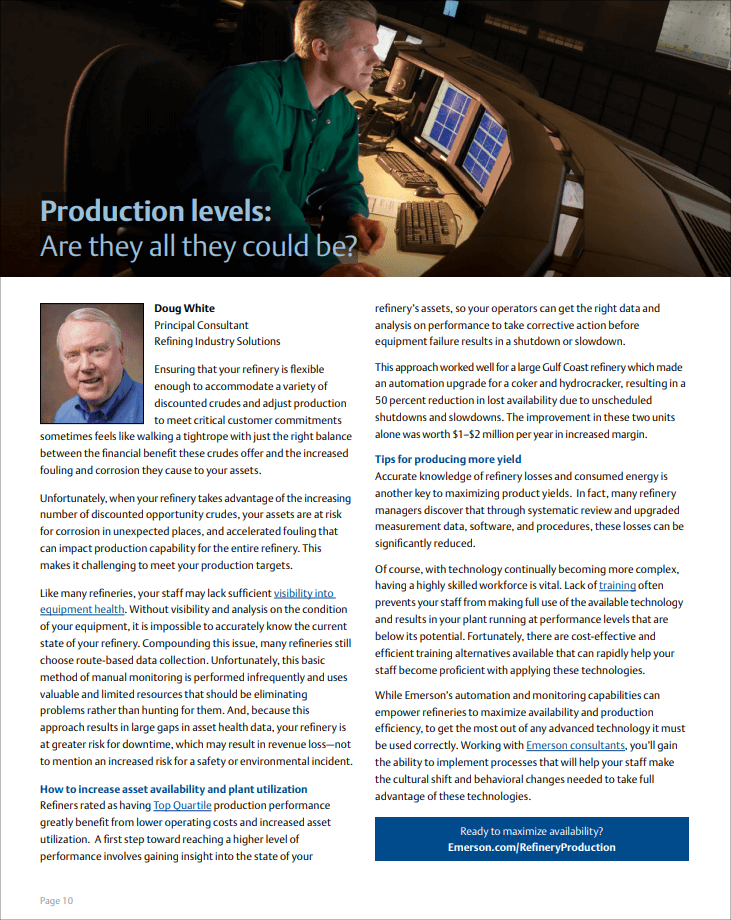Ensuring that a refinery is flexible enough to accommodate a variety of discounted crudes and adjust production to meet critical customer commitments sometimes feels like walking a tightrope with just the right balance between the financial benefit these crudes offer and the increased fouling and corrosion they cause to a refinery’s assets.
 In my article, Production levels: Are they all they could be?, in the Refiner’s Guide to Digital Transformation and Top Quartile Performance I explore this balance to optimize refinery operations.
In my article, Production levels: Are they all they could be?, in the Refiner’s Guide to Digital Transformation and Top Quartile Performance I explore this balance to optimize refinery operations.
When a refinery takes advantage of the increasing number of discounted opportunity crudes, its assets are at risk for corrosion in unexpected places, and accelerated fouling that can affect production capability for the entire refinery. This makes it challenging to meet production targets.
In addition, personnel at many refineries lack sufficient visibility into equipment health. Without visibility and analysis on the condition of equipment, it is impossible to accurately know the current condition of the refinery. Compounding this issue, many refineries still choose route-based data collection.
Unfortunately, this basic method of manual monitoring is performed infrequently and uses valuable and limited resources that should be eliminating problems rather than hunting for them. And, because this approach results in large gaps in asset health data, the refinery is at greater risk for downtime, which may result in revenue loss and an increased risk for a safety or environmental issues.
In the article, I share information on how refiners can increase asset availability and plant utilization—such as gaining insight into the state of the refinery’s assets, so operators can get the right data and analysis on performance to take corrective action before equipment failure results in a shutdown or slowdown.
This approach worked well for a large Gulf Coast refinery which made an automation upgrade for a coker and hydrocracker, resulting in a 50% reduction in lost availability due to unscheduled shutdowns and slowdowns. The improvement in these two units alone was worth $1–$2 million per year in increased margin.
I also highlight tips for producing more yield and cost-effective and efficient training opportunities available that can rapidly help staff become proficient with taking advantage of complex new technologies.
Download the full guide for more strategies to drive Top Quartile operational performance and visit the Refining industry section on Emerson.com for on the technologies and solutions to execute your digital transformation initiatives.
